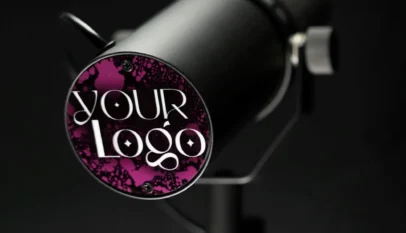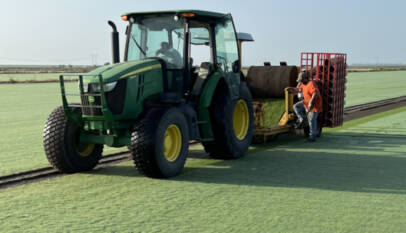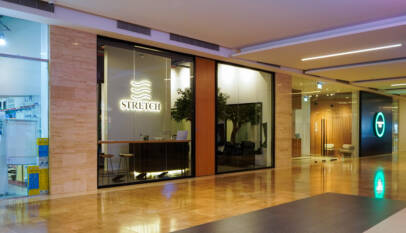How to Reduce Room Echo and Background Noise When Using the SM7B
The Shure SM7B is usually considered the best example of a dynamic microphone used for professional voice recording. With its organic warmth feature and almost perfect noise rejection, it is a very popular device among podcasters, streamers, and singers. On the other hand, for instance, if a room is not acoustically treated, even a recording made with a legendary isolation device like the SM7B can result in an echo and some noise. Therefore, knowing how the Shure SM7B solves the problem of noise isolation and how good setting methods can improve not only the sound but also the whole production process in a dramatic way is absolutely necessary if one wants to actually use the microphone’s power.
Why Room Echo Is a Common Challenge
Even when a microphone is very powerful, recording in a reflective room can still cause reverberation or flutter echo. Sounds from bare walls, glass, and hard flooring reflect and bounce back into the mic capsule. If you use a sensitive dynamic mic like the SM7B, these reflected sounds can fill the midrange, make the vocal less clear, and add a noise that you probably don’t want—the “studio sound” getting spoiled.
It was the intention behind the design of the SM7B to some extent to alleviate this problem by having a narrow cardioid pickup pattern. However, it is really the combination of mic placement, simple room treatment with the SM7B, and optimized gain structure that helps you to effectively control room reflections and reduce SM7B background noise.
The Role of the Shure SM7B Backplate
One of the differences in internal tuning flexibility is the feature that most distinctly separates the SM7B from the others. The Shure SM7B backplate is the part of the mic that is removable, and behind it, there are two essential switches housed:
- Bass Roll-Off—removes the low-frequency range that is normally the source of rumble in the room or proximity boom.
- Presence Boost—makes the vocal sound clearer in the region of the upper-mid-range frequencies.
When the bass roll-off switch is turned on, it will help alleviate low-frequency accumulation caused by room reflections and HVAC vibrations. By simply using these settings the right way, you can see quite a significant change even without putting in more processing or acoustic modification.
Step 1: Optimize Mic Position and Distance
Mic placement is your initial step towards SM7B noise isolation. The SM7B is a directional cardioid microphone, so the way and the place you use it determine how much of your voice versus your environment it picks up.
- Keep the mic at a distance of 2–4 inches from your mouth, with the tone and volume adjusted.
- Use a small off-axis angle (approximately 10–15 degrees) in order to lessen the plosive air blasts.
- Don’t point the mic at reflective surfaces—direct the mic to absorptive areas such as curtains or thick fabrics.
- Don’t place the mic next to computer fans or air vents.
By simply changing the position of the mic slightly, you can very substantially increase the noise that is blocked from your recording even before you have adjusted the EQ.
Step 2: Improve Room Environment and Surface Control
It is not necessary to have a fully treated studio in order to effectively treat the SM7B acoustics—just a few cheap interventions that absorb reflections and help with echo.
Some practical steps are:
- Put some foam panels or a thick cloth curtain behind and beside your recording place.
- Use a rug or carpet to stop floor reflection from hardwood or tiles.
- Put some heavy curtains over the windows or bare walls.
- Make a fast DIY booth with blankets or cushions around your mic stand.
In addition, for small studios, small acoustic shields or reflection filters placed behind the mic can also help to reduce the environmental reflections that change the vocal tone.
Step 3: Use Built-in Wind and Pop Protection
The SM7B is equipped with an integrated SM7B foam windscreen, which is a straightforward but very important element for a clean recording. This cover helps to soften the harsh parts of words and the air that comes from the mouth; thus, it avoids the vibration to the microphone. Although generally, the foam’s function is to be a wind controller, it also very slightly reduces the high-frequency reflections—thus, it could be considered as an overlooked tool for a more even sound capture.
In case your sound recordings still have too much of a “roomy” character, you may want to try thicker aftermarket windscreens or the use of dual-layer pop filters to have an additional layer of acoustic protection.
Step 4: Smart Gain and Preamp Settings
Proper gain staging is absolutely necessary if you want to reduce echo and background noise when using the SM7B. The SM7B is a microphone whose dynamic nature requires a strong and clean preamp that can provide at least 60 dB of gain. On the other hand, if you decide to raise the gain too much, you run the risk of increasing the subtle noise of the room.
The best methods are:
- Simply adjust your preamp gain only to the point where your average vocal level is about –12 dB peaks in your recording software.
- Don’t be tempted to raise the gain just for the sake of it. Instead, use an inline gain booster such as a Cloudlifter or FetHead to ensure that your amplification is clean and your noise floor remains low.
- If there is a noise gate or a dynamic expander in the post-production chain, these can be used to cut down on the very quiet environmental hum without the risk of the vocal dynamics being affected.
By doing so, you get to highlight the richness of the voice, and at the same time, noise remains quietly in the background.
Step 5: Complement Room Setup with Digital Enhancements
If a physical SM7B room treatment is somewhat constrained, digital methods can be used to achieve the desired effect to a greater extent:
- Using high-pass filters at 80-100 Hz helps to get rid of low rumbles.
- EQ introducing cuts around 300-500 Hz can help remove the final portion of the boxy reflections.
- Noise reduction software such as iZotope RX, Waves NS1, or even the built-in filters of Audacity can be used to get rid of ambient hiss.
- Soft compression (2:1–3:1) works to even out the dynamic range of the recording, thus making the sound consistent, and at the same time, it helps to mask the presence of the slight background noise.
- Use these changes sparingly, as the SM7B is already delivering a naturally balanced recording, and thus overprocessing can make the vocals sound fake.
Step 6: Rehearse and Monitor Regularly
Keeping a check on your vocal through closed-back headphones is something you should always do. With this, you get to hear the reflections, hums, or even the HVAC noise at the very beginning of the setting-up process. There are times when just changing your location or turning off a fan can eliminate more noise than any plugin could.
Making a short test recording of silence and then critically listening to it can be a way to help you pinpoint the exact frequencies that are affected by echo or are getting some kind of interference.
Clean Audio, Professional Presence
Without using any treatment, the Shure SM7B is able to provide a clarity of the kind professional recording sessions are characterized by if the recording habits are smart and the isolation strategies are effective. The result can be tremendously improved just by some minor changes in the environment, intentional acoustic treatment for the SM7B, and correct positioning of the microphone.
When you make use of every feature that is built-in—from the backplate switches to the SM7B foam windscreen—you create a setting that is actually supportive of your natural voice instead of being antagonistic. Get proficient with these handy steps, and there will be no other sound than the one that is crisp and focused reaching your audience—that is the ultimate proof of the SM7B’s quality being the greatest when technique and environment are in perfect harmony.
Wine SEO: Channelling Digital Power into Your Winery’s Growth
In today’s fast-paced digital era, the way wine enthusiasts discover their new favou…












